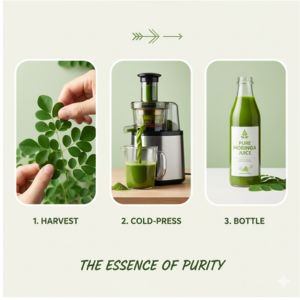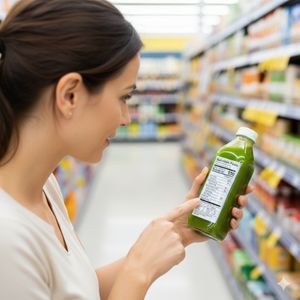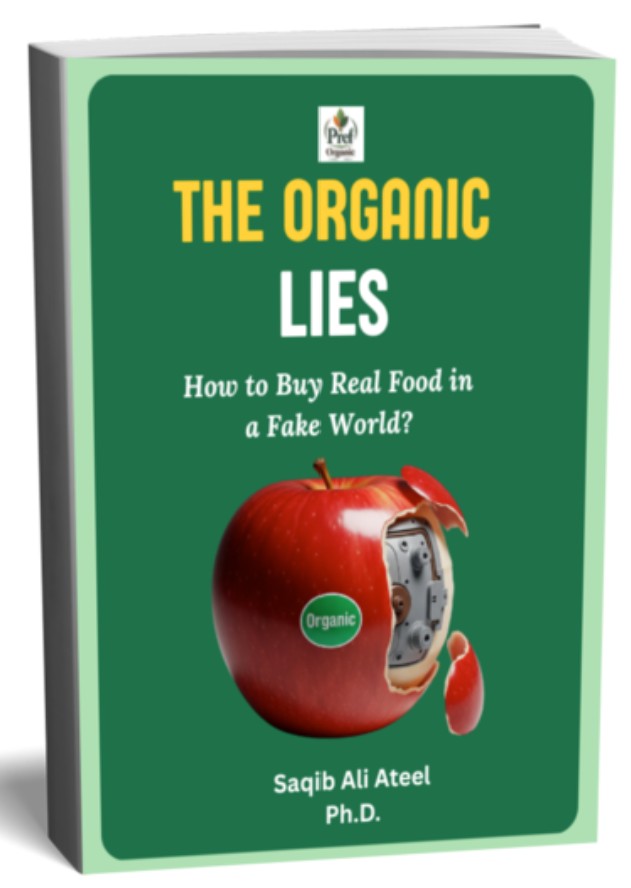Truth About Moringa Juice Benefits: Is It a Miracle Drink or Just
Sugary Water? 🧠

The science-backed moringa juice benefits are a topic you're likely exploring because you're looking for a simple, family-friendly way to bring the power of the "miracle tree" home. You've learned about the incredible potential of Moringa, and now you're wondering if a convenient, palatable juice could be the perfect fit for your busy life—and maybe even for your picky eaters.
It’s a hopeful thought. But as a caring parent, you’re also rightfully skeptical. Can a bottled drink really be as good as the natural plant? How do you navigate an aisle full of "green drinks" to find one that isn't just sugary water? And how do you use it safely?
I understand these questions completely. In my own home garden, I've picked fresh Moringa leaves for my family, and as a scholar, I've studied the science of how to preserve their power. My promise to you is to share what I know with the clarity of a scientist and the practical care of someone who knows the importance of trust when it comes to your family's table.
Let's find your confident "yes" or "no," together.
What Will You Discover Here?
Here’s a quick look at the clarity you’re about to gain. This is your complete blueprint for a confident decision.
- 🌱 From Plant to Bottle: Uncover the secret to how a quality moringa juice preserves the potent essence of the fresh leaf, bridging the trust gap between the farm and the bottle.
- 🧠 Your Expert Juice Aisle Guide: Get my simple, 4-point checklist to decode any juice label, empowering you to spot the pure, low-sugar options and avoid the fakes.
- 💪 A Simple, Family-Friendly Plan: Receive a clear, PhD-backed plan for serving sizes and joyful, kid-friendly ways to use Moringa juice, turning a healthy choice into a happy routine.
- 🛡️ The Honest Comparison: Get a transparent, side-by-side look at juice vs. powder, so you can make the absolute best choice for your family's unique needs.
From Living Leaf to Vibrant Juice: The Journey of a
Trusted Elixir 🌱

Your biggest question is about trust: how can a bottled juice be as good as the fresh leaf? You’re right to ask. The answer isn’t in the marketing; it’s in the method.
Imagine a pair of gentle hands carefully harvesting the most vibrant, nutrient-rich leaves from a healthy Moringa tree. This is where the journey of a high-quality moringa juice begins. To capture the moringa leaves juice benefits, that vitality must be preserved.
The journey of a trusted juice looks like this:
1. Careful Harvesting: Only the purest, most vibrant leaves are selected.
2. Gentle Cold-Pressing: This is the most critical step. Instead of using high heat, which can destroy delicate enzymes and vitamins, the leaves are pressed using immense pressure to extract the liquid essence. This method protects the plant's potent compounds.
3. Minimal Processing: A high-quality juice will have very few other ingredients. It is the liquid form of the leaf, not a complicated concoction.
Think of a fresh orange. You can squeeze it by hand to get pure, vibrant juice. That’s like cold-pressing. Or, you can boil it, concentrate it, add water back, and add flavor packs. That’s like making juice "from concentrate." When you choose a high-quality, cold-pressed moringa juice, you are choosing the closest thing to squeezing the fresh leaf yourself. It’s the promise of the "miracle tree," bottled with care.
Decoding the Juice Aisle: Your 4-Point Checklist for
Choosing the Best Moringa Juice 🧠
The juice aisle can be a confusing place. "Green drinks," "superfood blends," and pure juices all compete for your attention. Here is my simple, 4-point checklist to be your expert guide.
1. "100% Juice" vs. "Green Drink" ✨
- What to Look For: Check the ingredient list. Is "Moringa Juice" the first or second ingredient? Or is it buried after apple juice, pear juice, and "natural flavors"?
- Why it Matters: You want the benefits of Moringa, not a glorified fruit drink with a splash of green. A true moringa juice will be proud of its primary ingredient.
2. Sugar Content ❤️
- What to Look For: The "Added Sugars" line on the nutrition label.
- Why it Matters: The best Moringa juice will have 0g of added sugar. Its sweetness should come naturally from the plant itself or from a small amount of other fruit juices used in the blend. Avoid any product with added cane sugar, corn syrup, or other sweeteners.
3. Organic Certification 🛡️
- What to Look For: The official green "USDA Organic" seal.
- Why it Matters: This is your guarantee that the Moringa leaves were grown without synthetic pesticides. Since juice is a concentrated product, this is a critical mark of purity and safety for your family.
4. Processing Method 🌱
- What to Look For: Look for terms like "Cold-Pressed" or "HPP (High Pressure Processing)." Avoid the term "From Concentrate."
- Why it Matters: Cold-pressing and HPP are modern, heat-free methods used to preserve the nutrients and fresh taste of the juice while ensuring it's safe to drink. "From Concentrate" indicates a higher level of processing and potential nutrient loss.
Juice vs. Powder: An Honest, PhD-Backed Comparison
Is juice better than powder? It’s not about "better"; it’s about what’s best for your family. Here’s an honest look at the trade-offs.
- Juice Wins on Convenience & Palatability: There is no mixing, no mess. It’s a quick, grab-and-go option. For picky eaters, a splash of juice is often easier to accept than a green powder.
- Powder Wins on Fiber & Versatility: The powder is the whole, dried leaf, so it retains all of the natural fiber, which is beneficial for digestion. It’s also more versatile for cooking and baking and is the only way to safely control the tiny dosage needed for very young children.
- The Bottom Line: For pure, quick, and easy nutrition, juice is an excellent choice. For fiber and culinary creativity, powder is king. Many families (including my own!) use both for different situations.
Your Simple Plan: How to Use Moringa Juice Safely and
Joyfully 💪
You've used the checklist and chosen a high-quality juice. Now, let's create a simple routine that brings the moringa juice benefits to your family with confidence.
Serving Sizes: Start with a Splash
My most important advice is to listen to your body.
- Adults: Start with a small serving of 1-2 ounces (a shot glass) per day, either on its own or mixed with water. You can gradually increase this as your body adjusts.
- Children (over age 2): Start with a tiny splash, about 1/2 teaspoons, mixed into their favorite juice or smoothie. This allows you to introduce it gently. As always, consult your pediatrician before starting any new supplement for your children.
Kid-Friendly "Recipes" to Make it a Joy
- The "Green Apple Splash": Mix 1-2 teaspoons of moringa juice into a cup of regular apple juice. The sweetness of the apple juice makes it a delicious and easy "yes."
- The Smoothie Booster: Add a 1-ounce shot of moringa juice to your family’s morning smoothie for an instant nutrient upgrade.
- Moringa "Hulk" Popsicles: Mix moringa juice with pineapple juice and a little coconut water, then freeze in popsicle molds. It’s a perfect, healthy treat for a warm day.
A Confident Recommendation
Now that you have the complete blueprint to evaluate any brand, you can navigate the juice aisle with confidence. To save you time, I have done my own research based on these exact criteria.
One brand that consistently meets these high standards for purity, organic certification, and cold-pressed quality is Bella Moringa Juice.
For my complete, in-depth analysis of how Bella Moringa Juice stacks up against our checklist, you can read my full review here.
Your Journey to a Confident "Yes" is Complete

From the farmer's hands that harvested the leaves, to the checklist that cleared up a confusing aisle, to the simple plan that fits into your family's life—you are now fully empowered.
You came here looking for a convenient, family-friendly solution, and for the reassurance that you are making a safe and loving choice. You now have the knowledge to read any label, understand the process, and make a confident "yes" or "no" decision that is perfect for your family.
This is the profound peace of mind you were searching for. You’ve got this.
For the Curious Mind: Dive Deeper with These Trusted
Sources
My promise is always to ground my advice in verifiable evidence. For those of you who love to explore the science of food processing, these reliable sources are an excellent next step.
1. Food and Drug Administration (FDA): Juice HACCP
o Note: This is the official resource from the FDA on juice safety and processing. It explains the regulations and methods (like pasteurization and HPP) that ensure bottled juices are safe to drink. It's a technical read, but it's the source of truth for juice safety in the U.S.
2- Cleveland Clinic: "Is Cold-Pressed Juice Healthier?"
- Note: This article from the Cleveland Clinic provides an accessible and trustworthy explanation of cold-pressed juicing, comparing it to other methods and discussing potential health benefits and nutrient content. It addresses common questions consumers have about its nutritional value.
- Click Here
